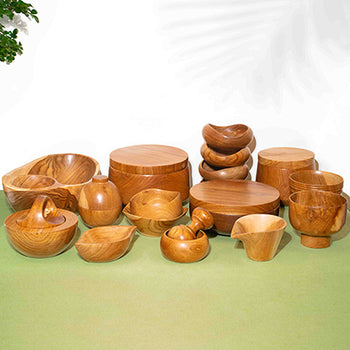Index
- Overview
- Plastic Straws: What’s Really the Problem?
- Paper Straws: Too Mushy Too Quickly
- Metal Straws: Sensitive to Temperature
- Glass Straws: Reusable But Breakable
- Silicone Straws: Good for Children, Not Biodegradable
- Hay Straws: The Straw Straws
- Grass Straws: A Green Alternative
- Edible Straws: Hitting Two Birds With One Straw
- Bamboo Straws: An Absolute Must-Have
- The Bottom Line
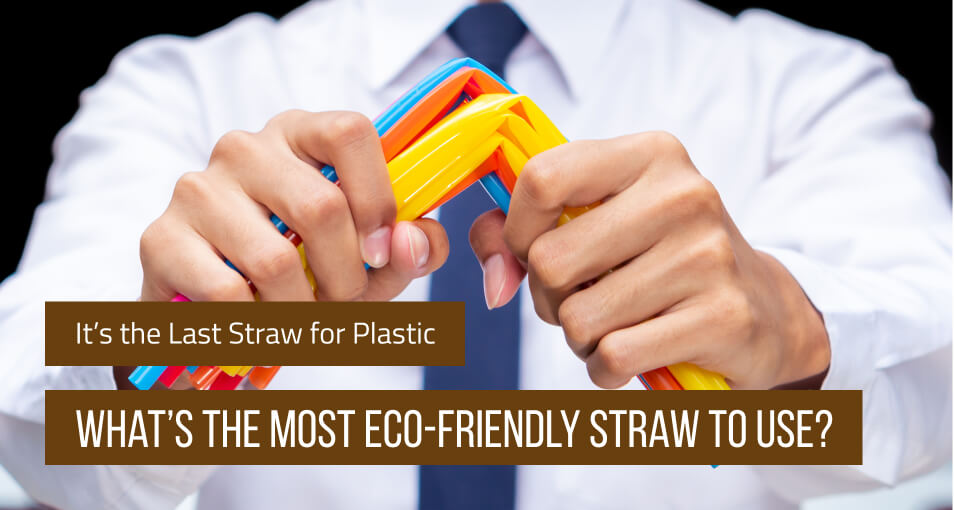
It’s the Last Straw for Plastic: So What’s the Most Eco-Friendly Straw to Use?
One of today’s biggest environmental concerns rests on the problem of plastic pollution. Since the Second World War, industries all over the world have been mass-manufacturing plastic products. Plastic has indeed brought tons of conveniences to people’s lives, especially in medicine, health equipment, technology, and transportation. However, plastic has also been bringing almost 8 million metric tons of waste into the ocean each year.
Plastic pollution has become one of the worst global crises today. It’s so harmful to the environment and even human health that it has urged the United Nations to form an international treaty about plastic waste reduction. As the public awareness of plastic trash continues to grow, cities and nations around the globe are now considering banning the use of plastic products, particularly plastic straws.
Now that many restaurants and other businesses have started banning plastic straws, it naturally leaves people to ask: “What’s the best alternative to plastic straws?”
Plastic Straws: What’s Really the Problem?
Each day, between 170 million and 390 million plastic straws are used in the U.S. alone. And each year, over 7 million plastic straws end up on shorelines in the country. In addition, an estimated 437 million to over 8 billion plastic straws get washed up on coasts around the world. It’s also worth noting that disposable plastic straws and other products are typically used for just a short time, but they persist in landfills for hundreds of years. In spite of this tragic reality, why do people continue to opt for plastic straws?
Some of the first establishments to use plastic straws are hospitals. Since plastic straws are bendable, they make it easier for bedridden patients to drink. That means these disposable straws are accessibility tools for people with certain disabilities, which is why disability rights advocates have spoken against the banning of plastic straws. Moreover, some straw options aren’t as durable or as soft as plastic, which can pose a problem for others with specific disabilities.
Every year, 8 million tons of plastic flow into the ocean, and only 0.025 percent of these are straws. This, however, has not stopped environmental organizations from trying to put an end to the widespread usage of plastic straws. Because it isn’t difficult for many people to refrain from using plastic straws, it’s easily the first major step to reducing or eliminating plastic waste altogether.
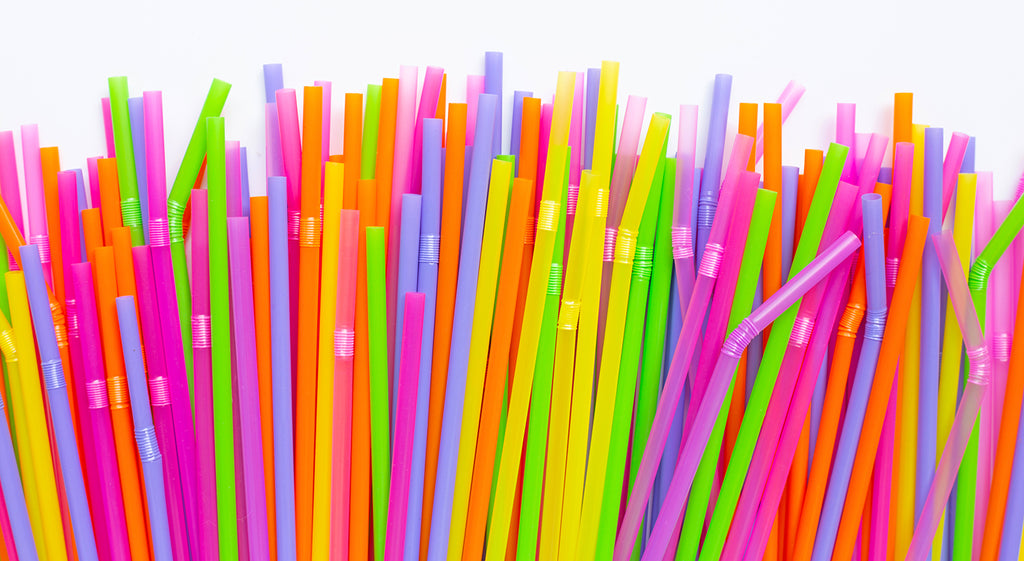
Although plastic straws comprise a small percentage of the total plastic pollution, it’s no question that they still play a huge role in polluting and harming the environment. These straws are hard to recycle and unfailingly end up in landfills. That’s why for people who use straws only for convenience and not for necessity, it’s best to completely avoid drinking through plastic straws.
But the question remains unanswered: “What’s the most cost-effective, durable, and biodegradable straw that is accessible and ideal for everyone?” Before answering that, let’s look at the most popular eco-friendly alternatives to plastic straws.
Paper Straws: Too Mushy Too Quickly
Paper straws are the most popular disposable alternative to plastic straws. Unlike plastic, paper straws can disintegrate into the earth for a month or so. They are biodegradable and compostable, so discarding them won’t be as harmful to the environment as disposing of plastic straws. Moreover, many people won’t always remember bringing reusable straws with them every day, and paper straws are far better than plastic straws in terms of eco-friendliness and biodegradability.
So what’s the downside of paper straws? While they’re the most popular option in places that ban plastic straws, they’re also popular for their inconvenient characteristic: fast absorption of liquids. Paper straws go soggy too quickly, which means they can’t be reused at all. They also serve as a band-aid solution to the problem of single-use straws by being just another single-use alternative. Plus, they can make drinks taste pretty awful because of the fibers they leave. Unless the taste of wet paper pulp is your thing, you might want to consider other straw alternatives.
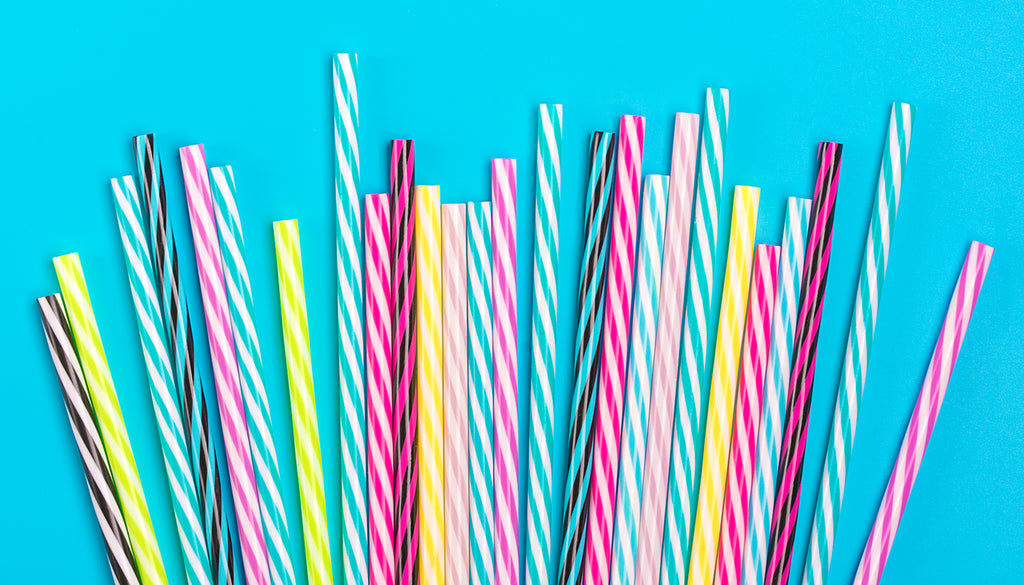
Metal Straws: Sensitive to Temperature
While paper straws are the most popular disposable option, metal straws are the most popular reusable alternative. Typically made of stainless steel, metal straws are durable, making them easy to transport and reuse for a long time.
Since metal is a good thermal conductor, drinking extremely hot beverages through metal straws isn’t at all a pleasant experience. Metal straws can also occasionally leach a metallic taste into your drink. Moreover, you can end up with a toothache or even a cracked tooth when you bite down on a metal straw too hard. That’s why metal straws aren’t the greatest or safest reusable straw alternative, especially for kids.
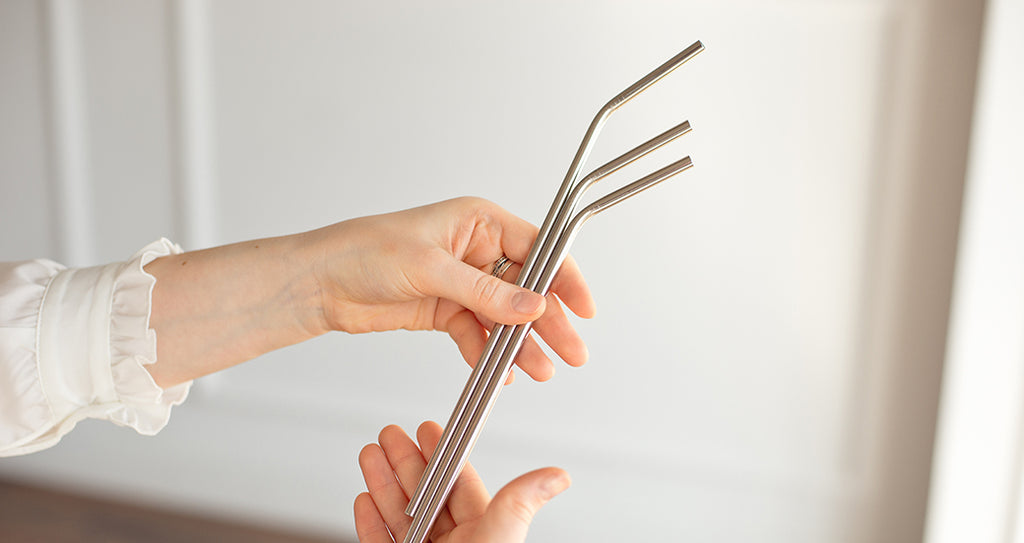
Glass Straws: Reusable But Breakable
Another reusable straw option is glass. Because glass is transparent, glass straws are easy to clean. Plus, they’re dishwasher-friendly and hypoallergenic. They also won’t leave an unpleasant taste in your drinks like how metal straws will. They come in different glass colors and shapes, so they’re pretty stylish too. Although they’re also a conductor of heat and cold, they’ll remain at the same temperature as that of the glass or cup you’re drinking out of, unlike metal straws.
What makes glass straws a not so good reusable alternative is that they can easily break. That means they aren’t portable like other reusable straws, which you can just chuck into your bag and forget. Unless you want a pile of broken shards in your bag, you can’t bring glass straws wherever you go. Because they’re easily breakable, using glass straws isn’t that safe for children.
Silicone Straws: Good for Children, Not Biodegradable
Because silicone straws are soft and flexible, they are a great option for children and for anyone who likes chewing on straws. As long as they’re BPA-free, silicone straws won’t leave particles in drinks, just like how metal, plastic, and paper straws do. They’re also durable, making them a great reusable straw option.

The problem with silicone straws is that, although they’re dishwasher-friendly, they can still be challenging to clean thoroughly because of their flaccid texture. They have also drawn criticism because of their rubber scent and taste. Additionally, they are not biodegradable since they still are considered plastic. As we’re all striving for a world with less plastic waste, producing silicone straws might even be counterproductive to such a goal.
Hay Straws: The Straw Straws
Straws made from nature’s straws, hay has become one of the newest materials used for disposable drinking straws. Hay straws are completely biodegradable, unlike plastic straws. And unlike paper straws, they won’t get soggy. After using them, they can be tossed onto the pile of compost, and they’ll eventually break down and go right back to the earth.
So what’s wrong with straw straws? Well, they’re delicate and thin, so they’re ideal only as single-use straws instead of reusable ones. And because they’re delicate and thin, you have to be particularly careful when handling them as they can easily split and break with just a slight bend. That also means they generally are not strong enough for stirring drinks or for drinking thick, blended beverages.
Grass Straws: A Green Alternative
There’s another new type of straw made from a natural, renewable source: grass straws. Since they’re all-natural, they can biodegrade and decompose after they’re thrown away. Made from wild grass, these straws are compostable, affordable, and free of chemicals and preservatives.
Fresh grass straws should be kept in airtight bags in the refrigerator so that they can last for up to two weeks. To make them last longer, they can be boiled in water with salt, dried, and stored in a cool, dry container.
Aside from this, there are also dried grass straws, which can be stored at room temperature and can last for up to six months. Whether they’re fresh or dried, grass straws are all-natural, organic, and surprisingly edible! Chewing these straws can even clean your teeth and gums.
Despite the fact that they cannot last as long as other straws, grass straws are a great eco-friendly alternative to plastic straws. They’re made from sustainable materials that are easy to grow, and they can serve as healthy, edible snacks for all straw-biters out there.
Edible Straws: Hitting Two Birds With One Straw
Speaking of edible straws, there are straws that are specially made to be edible. Most edible straws today are plant-based, so they are safe to eat—perfect for straw-biters. That also means they are biodegradable and compostable—a win for you and a win for the environment. Edible straws are ideal in times when you feel hungry and thirsty at the same time. Just sip your drink when you’re thirsty and chew on the straw when you’re hungry. Plus, they come in different delicious flavors, like strawberry and caramel.
Edible straws are perfect for those going zero-waste. After eating them all up, there’s no waste left behind. They also seem too good to be true, and they are. Edible straws are relatively more expensive than other types of single-use straws, but arguably, they’re worth the extra penny.
Bamboo Straws: An Absolute Must-Have
Going back to the question “What’s the most cost-effective, durable, and compostable straw that is accessible and ideal for everyone?” Here’s the answer: bamboo straws.
Like grass straws, bamboo straws are also made from grass, except this type of grass is one of the strongest out there. In fact, bamboo’s durability is comparable to that of hardwood timber or strong softwood. It’s so durable that it is used as a building material in some parts of Asia. That’s why bamboo straws are a reusable, portable, and durable straw option.
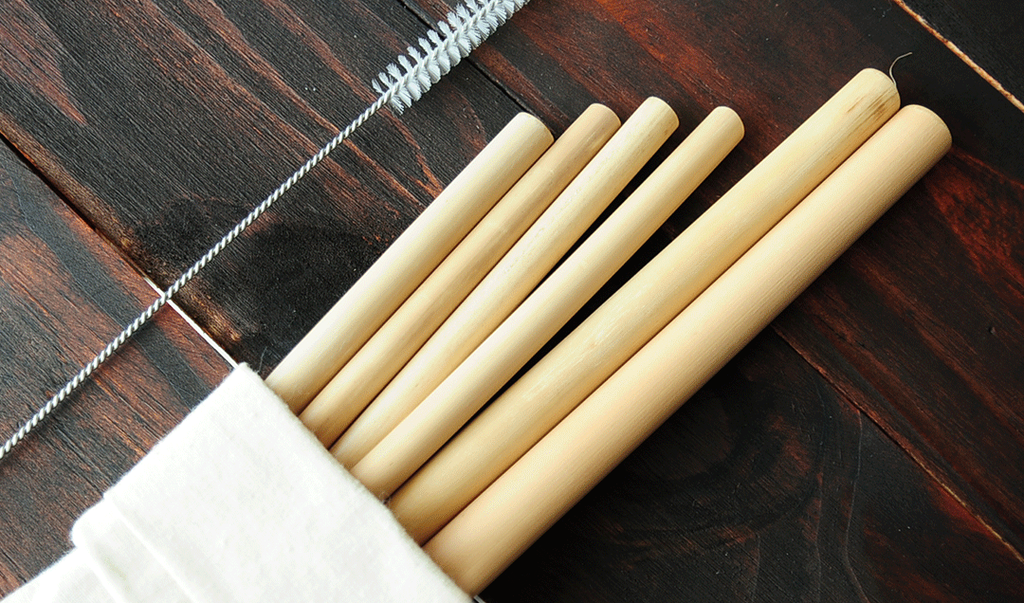
Another plus point for bamboo straws is that they’re made from one of the fastest-growing plants in the world. A certain species of bamboo can grow up to 35 inches per day, giving it the world record for the fastest-growing plant. Because bamboo is easy to grow, it is one of the most sustainable and renewable sources of materials for straws. Also, its stalk is usually hollow, so it seems as if Mother Nature has intentionally made bamboo to be used as a straw.
Besides being all-natural, sustainable, and chemical-free, bamboo straws won’t affect the flavor of drinks, and they are also more temperature-resistant than other straws. And let’s admit it, bamboo straws look cool. So not only can you enjoy your drink without accidentally burning your mouth or the straw changing your drink’s taste, but you can also sip drinks in fun tropical style.
Contrary to some beliefs, bamboo straws are easy to clean. After every use, you can rinse them with tap water or hot soapy water. You can also use a cleaning brush for a thorough cleaning, like what users of other reusable straws do.
After a month or so of using these straws, you can soak them in boiling water with a bit of vinegar for a couple of minutes. To keep them in pristine condition, you can also polish them with natural coconut oil. With proper care and maintenance, bamboo straws can last months or even years of regular use.
While bamboo straws are reusable and durable, they aren’t immune to wear and tear over time. But the great thing about bamboo straws is that they’re all-natural, biodegradable, and compostable. When they can’t be used any longer, they can simply be tossed onto the soil, and they’ll naturally break down into organic particles as healthy compost.
The Bottom Line
As long as you are physically able to abandon plastic straws altogether, then, by all means, don’t use plastic straws. As long as it isn’t plastic, then go ahead and sip away. Whether it’s made of glass, metal, grass, or silicone, the straw you’re using is already better than single-use, toxic plastic straws. Choosing reusable straws or biodegradable straws is the first step toward a plastic-free lifestyle.
Biodegradable doesn’t always mean disposable, and reusable rarely means biodegradable. As it happens, bamboo straws are both. Because these straws are all-natural yet durable, they can be used for months or even years, and they can be composted when it’s time to throw them away.
Yes, bamboo straws are the best when it comes to eco-friendly, cost-effective, and reusable straw options. That’s why at Rainforest Bowls, we offer all-natural bamboo straws. These straws are available in three different sizes: regular, medium, and boba—perfect for sipping any kind of drink!
Find wholesale reusable bamboo straws and even all-natural coconut bowls and wooden coconut utensils here at Rainforest Bowls.

References:
- https://phys.org/news/2018-04-science-amount-straws-plastic-pollution.html
- https://www.nationalgeographic.com/environment/2018/07/news-plastic-drinking-straw-history-ban/
- https://www.nationalgeographic.com/magazine/2019/07/rethinking-plastic-straws-consider-these-options/
- https://www.washingtonpost.com/lifestyle/kidspost/plastic-straws-are-little-but-they-are-part-of-a-huge-problem/2018/09/07/63bfe44e-ac9f-11e8-b1da-ff7faa680710_story.html
- https://www.nytimes.com/2018/07/19/business/plastic-straws-ban-fact-check-nyt.html
- https://theaseanpost.com/article/vietnams-wild-grass-straws
- https://www.guinnessworldrecords.com/world-records/fastest-growing-plant/
